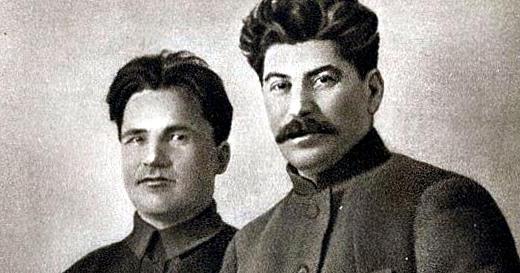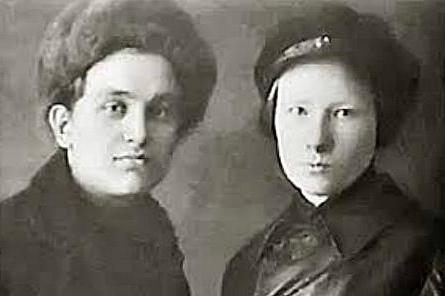Who is Kirov Sergey Mironovich? The biography of this man is full of such events that historically allows him to be placed in a special place among the leaders of the party elite of the Soviet era. Even his death was the reason for the start of serious events that claimed more than a dozen lives of innocent people.
Kirov Sergey Mironovich: biography of a young revolutionary
S. M. Kirov was born on March 27, 1886 in Urzhum (a city in the Vyatka province) into a family of ordinary workers. The boy was only eight years old when he was left without parents: his mother died, his father, having left to work, disappeared without a trace. And if the grandmother took Serezha’s sisters to her, she sent him to a shelter for minors. By the way, at that time the name of the future party leader was Kostrikov. He became a Kirov much later. But first things first.
Sergey grew up as an intelligent and hardworking child; studying for him did not create special problems. Having successfully graduated from the parish and then the city school in his native Urzhum, the boy, enlisting the recommendations of his teachers, goes to Kazan, where he enters the mechanical and technical school and finishes it brilliantly in 1904, joining the top five graduates.
In the same year, Kostrikov moved to Tomsk and got a job as a draftsman in the city council, while simultaneously attending training courses at the Institute of Technology. But the planned peaceful future did not come true.
Sergei, imbued with revolutionary ideas in Kazan, moved to Tomsk, at the first opportunity he becomes an active member of the RSDLP under the party pseudonym Serge. In 1905, he was arrested for participating in a demonstration, but he did not stay in prison for long. After his release at the next party conference, he was elected to the committee of the Tomsk RSDLP. He becomes the organizer of anti-government demonstrations and rallies, forms fighting squads. As a result, in 1906, Sergei Kostrikov was again arrested. This time he was sent to prison for a year and a half.
Defeated but not broken
In June 1908, S. M. Kostrikov was released from prison, which was supposed to change his views on the revolutionary movement. However, this did not happen. After leaving prison, he goes to Irkutsk, where after the restoration of the party organization, which has been almost completely destroyed by the police, he again begins to work actively in a revolutionary direction both in the city itself and in Novonikolaevsk (now Novosibirsk). In May 1909, Serge, evading police harassment, was forced to leave for the south of the country.
Work in the North Caucasus
In Vladikavkaz, he works closely with the local cadet newspaper Terek, publishing articles about the impressions gained while climbing Elbrus and Kazbek, leaving reviews of theatrical performances taking place in the city. Here he met his future second civil wife, Maria L. Marcus.
At the end of the summer of 1911, Kostrikov was again arrested in an old case instituted in Tomsk. He was charged with organizing an underground printing press, but his guilt was never proven. Kostrikov continues to work in Terek, but in order not to attract attention once again, he takes the pseudonym Kirov, which is believed to have been formed on behalf of the king of Persia - Cyrus. From this moment, the biography of Kirov Sergei Mironovich does not represent anything outstanding. Although articles written by him and often exposing the current regime are very popular among the opposition-minded population.
Party career and civil war
Until the revolution (1917), S. M. Kirov did not particularly show himself, and during the coup he was not among those who seriously influenced what was happening in the country. The party biography of Sergei Mironovich Kirov made another leap only in 1919: he was appointed head of the Astrakhan revolutionary committee. From this moment begins his fairly quick climb up the career ladder.
After the counterrevolutionary rebellion in Astrakhan was severely suppressed under his direct leadership, a religious procession was shot, Metropolitan Mitrofan and Bishop Leonty were killed, Kirov became a member of the PBC of the Eleventh Red Army. From the very beginning of 1919, Sergei Mironovich, together with S. Ordzhonikidze, led the offensive of his units in the North and South Caucasus: Vladikavkaz was taken on March 30, and Baku a month later (May 1).
At the end of May 1920, Kirov was appointed plenipotentiary in Georgia, where power still belonged to the Mensheviks. In early October of that year, Sergei Mironovich, at the head of the Soviet delegation, traveled to Riga to sign a peace treaty with the Poles, after which he returned to the North Caucasus, where he joined the ranks of the Caucasian RCP (b). In March 1921, as a delegate to the tenth congress of the RCP (B.), Kirov was approved as a candidate for membership in the central committee of the party.
In April 1921, Sergei Mironovich presided over the congress of the Highland Autonomous Soviet Socialist Republic (now North Ossetia). And in July of the same year he was elected secretary of the Central Committee of the Communist Party of Azerbaijan. And soon he became one of the founders of the Transcaucasian SFSR (December 1922). In April 1923, the delegates of the Twelfth Congress of the RCP (B.) Accepted Kirov into the Central Committee of the Communist Party of the Bolsheviks. The head of the Azerbaijani Communist Party, S. M. Kirov, was sympathetic to Stalin, despite the fact that, in fact, he remained a minor figure in the party hierarchy. He was not considered an upstart, did not seek to occupy high posts and at the same time possessed a real gift of persuasion, excellent business acumen, and was also known as an excellent manager and loyal ally.
Kirov in Leningrad
Stalin's good attitude towards Kirov soon resulted in his appointment as head of the party organization of Leningrad. His main task was to reduce to zero the influence on the Leningrad Communists of the former head of the city party, Grigory Zinoviev, the arch-enemy of Stalin. And Kirov succeeded, despite the fact that they even tried to use cooperation with a cadet newspaper against him. Sergey Mironovich not only achieved complete control over the party organization of the city, but also became practically the master of Leningrad, controlling literally everything and solving even housing issues. Success in the management of the city eventually made him a major political figure.

However, there is an interesting fact - Kirov Sergey Mironovich, although he could lay claim to the highest levels of power in the country, especially after becoming a member of the Politburo of the Central Committee of the All-Union Communist Party of Bolsheviks (Bolsheviks), he did not take advantage of this, but concentrated entirely on the affairs of Leningrad. This suggests that in the first place Kirov had precisely selfless work, and not building a career. At the same time, he fully supported the policy pursued by Stalin, which, of course, suited him. For Joseph Vissarionovich, he was a good and, most importantly, reliable support without a "stone in his bosom."
But the family did not work out
If everything was fine with social activities, then the personal life of Kirov Sergey Mironovich did not want to take shape. In 1920, he met his first wife (no data about her has been preserved). A year later, a girl was born to them - Eugene. But a misfortune happened - Kirov’s wife fell seriously ill and soon died.
There was no time for a party leader to deal with a child - work in his life took all the time, and Evgenia Sergeyevna Kostrikova had to repeat her father’s childhood destiny - to go to a boarding school. This happened after her parent decided to connect his life with a long-time girlfriend - Maria Lvovna Markus. The woman categorically refused to accept someone else's child. Thus, the first family of Kirov Sergey Mironovich fell apart completely, and the second full was very difficult to call, since Marcus was only a cohabitant of Kirov and did not give birth to children.
By the way, Evgenia Sergeyevna Kostrikova was a worthy daughter of her father - Kirov Sergey Mironovich. An interesting fact from her biography is vivid proof of this. During the war with fascist Germany, she was the only woman commander in history who was subordinate to a whole tank company.
How was Kirov Sergey Mironovich killed?
It is believed that women were Kirov's weakness. Gossip went about his many novels with famous artists of the Leningrad and Bolshoi theaters. However, information confirming this was not found. And the possible illegitimate children of Kirov, Sergei Mironovich, also never announced themselves, at least there is no evidence of this. Nevertheless, one of the versions connects his death with a love adventure. According to this assumption, Kirov had a fleeting affair with Milda Draule, an employee of the regional committee. Having learned about this, her husband Leonid Nikolaev decided to punish the opponent by killing him.

There is another version according to which Nikolaev, being a man unstable and with overstated ambitions, decided in this way to become famous and go down in history, as the killers of Alexander II did. Whether it is true or not is not to be recognized, but the fact that it was he himself who personally sentenced such a prominent party leader to death is an undeniable fact. At that time, state institutions did not have serious security, so it was not difficult for Nikolaev, armed with a gun, to penetrate into Smolny, where the party’s hill was then located. Having met Kirov in the hallway of the palace and following him, Nikolaev shot him in the head, after which he tried to commit suicide, but could not, having fainted.
Kirov's murder as a reason for repression
After the detention of Nikolaev and a series of interrogations, it became clear to the investigators that the killer acted alone, and there was no political motive for this crime. However, Stalin did not like this result: “his man” - a statesman of high rank, should not have died so stupidly, which means that his death can be used in his own interests. To do this, it simply should be presented as the machinations of the opposition environment.
As a result, after a series of political processes, 17 people were shot, about 80 went to prison, 30 - to exile. Thousands of people were expelled from Leningrad as unreliable. By the way, not only Nikolaev was shot, but also his wife (Kirov's alleged lover) Milda Draule.
Tribute to Kirov
The fiery stands of the revolution, completely devoted to the country and the cause of the party, enjoyed not only high authority among the people, they really loved and respected him in the Soviet Union. In honor of him, the city of Vyatka was renamed Kirov (1934), and the monuments to Sergei Mironovich Kirov can be found in many parts of the country. The “master of Leningrad” was buried near the Kremlin wall, on Red Square in Moscow.